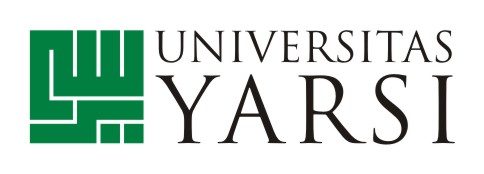Eid al-Fitr is coming in a few days. There has been a classic and heated debate for years about how to decide the exact day or date of the start of Ramadan and Eid at the same time. It is generally known that there are basically two methods or approaches to decide on this important date. First, by calculating or say the calculation method (calculation). In this method, the date or day completely depends on the calculations carried out based on astronomy. The second is by means of sight, also known as rukyah, where the date or day is determined by the sight or vision of the new moon or full moon (hilal). If the new moon can be seen after sunset on the day before the projected Ramadan and/or Shawwal, then it is decided that Ramadan/Syawal will occur on the following day. If the crescent moon cannot be seen, it is determined that Ramadan will last 30 days. Or, Sya'ban or Ramadan is extended by one more day.
Each support group has a "strong" reason why a particular method was chosen and implemented. The second group – for example – refers their reasons to the hadith which says more or less: start (and/or) stop fasting when you see the crescent moon. Meanwhile, the first group has the following reasons. First, the spirit promoted by the Al-Quran is basically a calculation method, because the Al-Qur'an itself mentions several indicators such as in QS Ar-Rahman verse 5.
Second, the hadith discussed by the second group is basically contingent. This means that it only applies if certain conditions are met. Among these conditions is that if the Muslim community does not have sufficient knowledge so they cannot carry out scientific calculations. In the current situation, knowledge – especially astronomy – has developed so advanced. Moreover, so many Muslims now possess this specialized knowledge and skills. Thus, they can calculate correctly and accurately. During the centuries of Prophet Muhammad (pbuh) perhaps this condition was not fulfilled because the knowledge and skills at that time had not yet developed, and also almost none of them had acquired this knowledge and skills properly.
The third reason is that the rukyah process is not a worship activity. This is just a tool, medium or facility. Tools, media or facilities may be changed or developed from time to time. The real worship is fasting itself. Of course it can't be changed at all.
The fourth reason is that the rukyah seriously hinders the Muslim community in general from planning. As is known, when rukyah is applied, the certainty of the start or end of Ramadan can only be known one day in advance. While using the calculation method, everything can be known with certainty long in advance. Therefore, one can make plans.
The fifth reason is that the rukyah method is limited in scope. Maybe in certain areas the crescent moon can be seen, but not in other areas. If each person limits himself/herself to seeing the full moon, then the beginning and end of Ramadan may differ from one place to another.
The sixth reason is that rukyat is very dependent on climate. In places where the weather is clear and clean, it is easy to see the crescent moon. However, in some other places where the weather or climate changes easily, it is very difficult to see the crescent moon. Finally, another problem is that the determination of the day of Arafah, where all Hajj pilgrims throughout the world must gather as one of the main pillars of Arafah as a mandatory Hajj program.
The reasons above are more than enough to think about implementing the rukyah method. However, apart from the reasons above, there are important considerations for the Indonesian case.
As is known, the rukyah process requires several steps. First, the designation of 124 points or places throughout the country to see the crescent moon (this is 2023). We can imagine how many people are involved. If there are 10 team members in one place, there will be at least 1.240 people involved nationally. Each team must send a report to the Ministry of Religion (Kemenag). The large team in Jakarta then had to summarize the reports collected from various locations nationwide. Finally, the results will be announced in another large meeting, attended by many “important” people in Jakarta. What are the implications of this activity?
What else besides a large budget that must be approved and finally released. Until now, no information has been opened or disclosed by the Indonesian Ministry of Religion. A rough calculation would show that the budget for this activity could reach hundreds of millions of rupiah or more. It is even possible if the budget reaches around 1 billion rupiah, per istbat. If twice (beginning and end of Ramadhan), then the amount is certainly at least Rp. 2 Billion
When we think about effectiveness and efficiency, and the large number of poor people in this country, it is difficult to avoid the conclusion that the rukyah option is no longer wise to continue. Isn't it much more beneficial that the huge funds disbursed for rukyah so far have been given to the needy and poor? When deciding whether Ramadhan or Shawwal, just use calculation.
Wallahu a'lam bishawab.
Muhammad Akhyar Adnan
Accounting Study Program, FEB
Yarsi University

